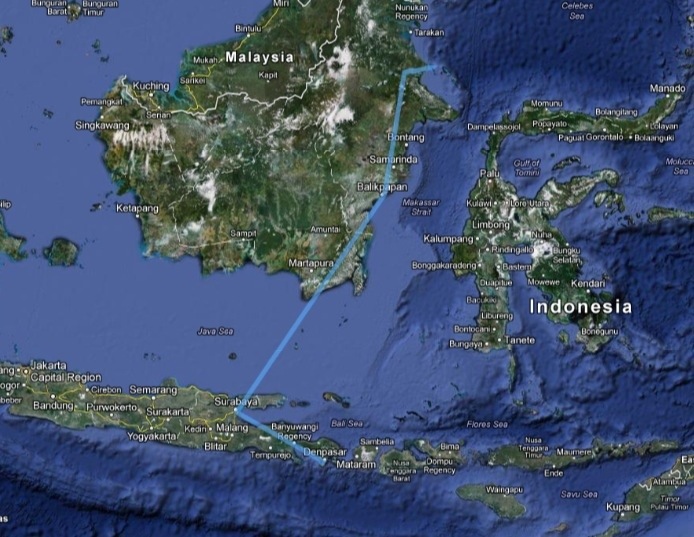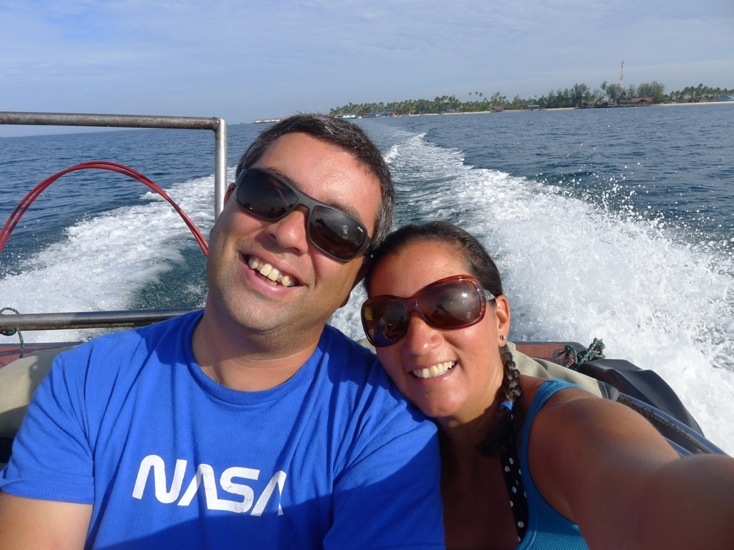
Derawan Island sits in the middle of a small archipelago of atolls named after one of the smallest but richest islands in the group, Sangalaki. The archipelago lies off the northeast coast of Kalimantan (Indonesian Borneo) in the Strait of Sulawesi. The whole area is a proposed UNESCO world heritage site due to its incredible marine biodiversity and unusual atoIlic formations. This was clearly a place we needed to explore!
With great excitement we charted one of the totally inadequate, nearly flat bottomed speed boats on offer to take us out to two of the most interesting islands in the group, Kakaban and the namesake island Sangalaki. It was also with great excitement the three young, cute Dutch college girls from Amsterdam that we had met on the trip over decided to join us and share the cost of our foolish vessel.
The morning of our excursion brought light wind and glassy seas, just the kind of water our little speed boat was made for. With lunch packed and snorkeling gear in hand, we all set out with our boat captain, the brother of the owner of our homestay. The boat was fast and we tore out over the sea. Flying fish jumped around us as we took in the salt air. Even at our break-neck speed it took over an hour to make the crossing from Derawan to Sangalaki, our first destination. As we drew closer, the fun began. We motored into deeper, more open water where there was a swell and the ridiculousness of our craft became apparent. The boat slap, slap, slapped as we crossed the swell. Our captain laughed maniacally everytime we all got drenched by the spray that leapt over the bow of our boat.
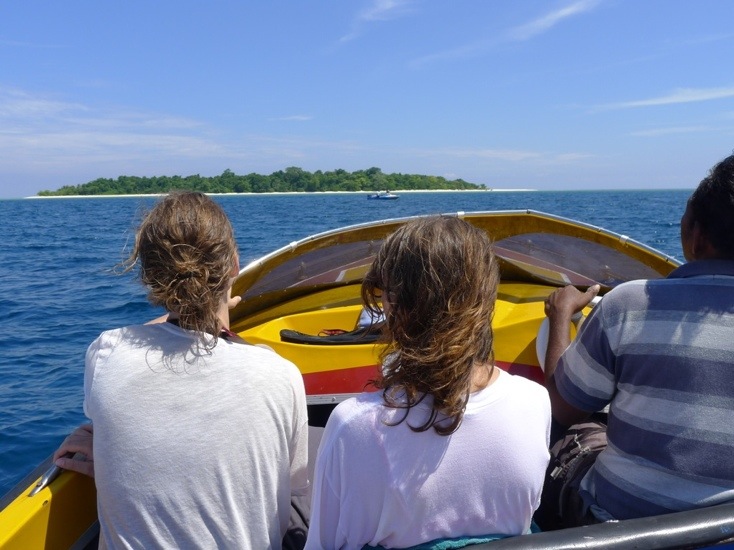
Finally we reached Sangalaki, a tiny teardrop of an atoll that is uninhabited save a few turtle biologists. More green sea turtles nest here on Sangalaki than anywhere else in the archipelago. But we weren’t here to see turtles. We were on the hunt for manta rays. The giant pelagics flock here in large numbers to be cleaned by the reef fish in an amazing symbiotic relationship. After briefly explaining the delicate art of snorkeling to our new Dutch friends, we plopped in the water for a look. After an hour we still hadn’t spotted any mantas. We saw turtles, turtles mating(!), sharks and all manner of reef life, but no mantas. Our captain explained to us (entirely in Bahasa) what we took to mean that sometimes the mantas didn’t show up until afternoon and that we would come back later. So in the boat we went, off to our next island, Kakaban, a half hour slap across the sea.
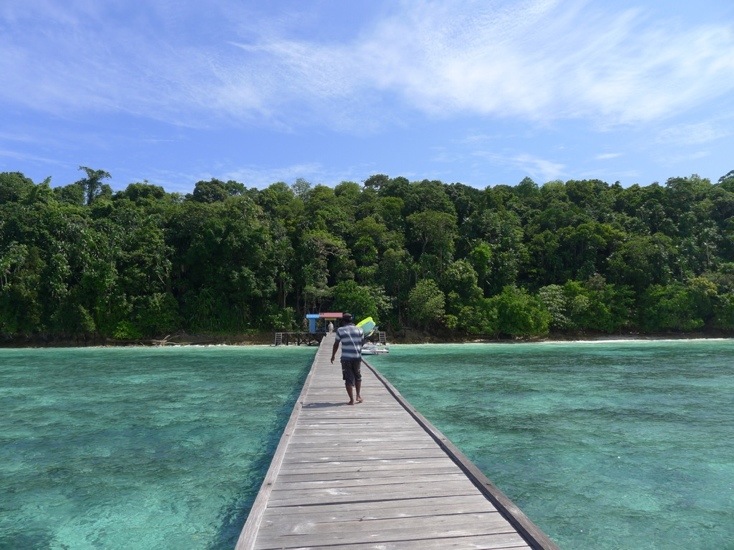
Kakaban literately translates to “hug.” The island gets this name because it is mostly a huge brackish lake surrounded by a jungly coral landmass. This kind of formation is extremely rare. There is only one other like it in the world. Kakaban is uninhabited, but a system of wooden steps and walkways has been built to make getting through the jungle to the lake easier.
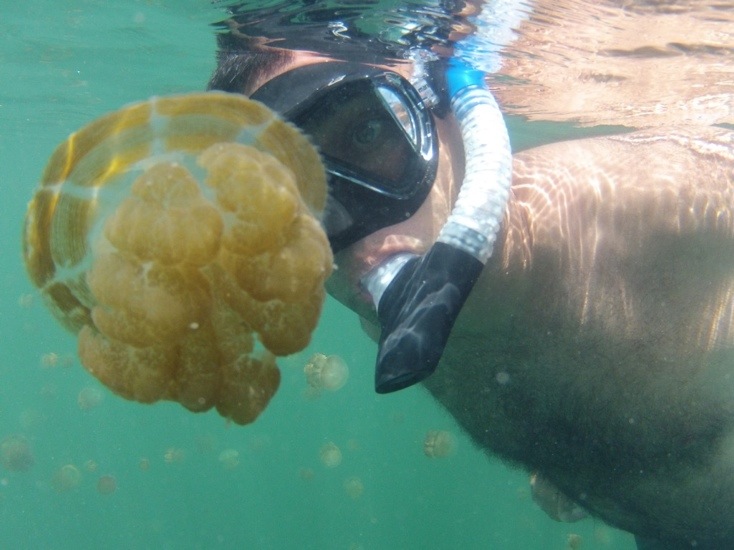
Kakaban Lake is very special in many ways. Its waters are inhabited by mind-bending numbers of stingless jellyfish. There are no natural predators in the lake so over time the stinging adaptation has been lost and the number of jellies has swelled to almost unbelievable proportions. Snorkeling in the lake is an amazing experience. There are so many jellies that you can’t really kick, for fear of hurting them. They run into your mask. You can touch them and examine their every detail at a few centimeters from your eyes. The feeling is total jellyfish immersion!
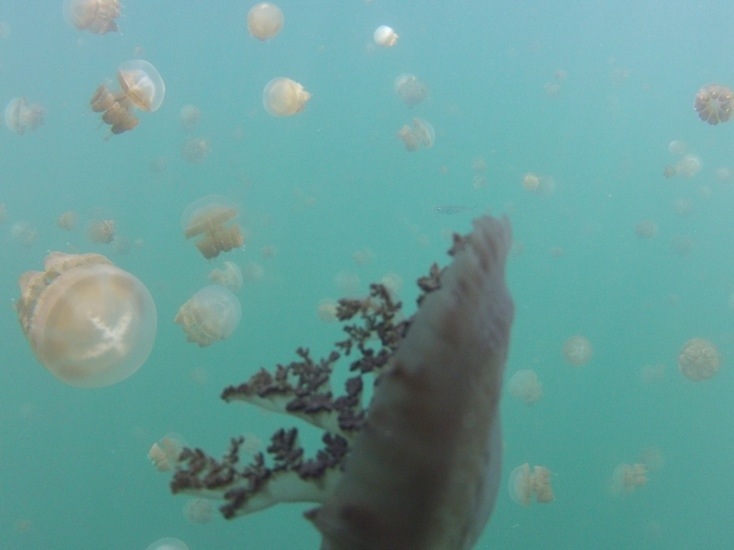
Back out on the sea side of Kakaban there was also a lovely lagoon and spectacular coral wall. The Dutch girls were wilting in the sun in a way only white people can at two degrees north of the equator so they hid in the shade. Melody and I were hardened off by genetics and time, so we spent an hour drifting along the wall. Perfect visibility that pushed past 20m and fish everywhere was the name of the game. The wall is huge. The whole scene rivaled Kakaban Lake and was among our top underwater experiences.
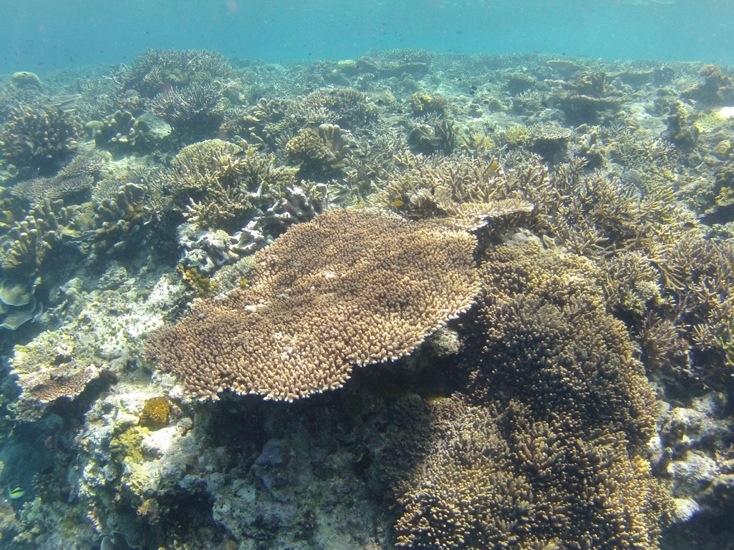
Our last stop of the day was back to Sangalaki for one more look for the mantas. This time we would not be denied. Our captain had an amazing eye for spotting these majestic gentle creatures. He would bring the boat close to one and we’d all jump out and swim with it sometimes within 2m. When he spotted another we’d all pile back in the boat and repeat. By the end of our session we had all seen at least four mantas.
Finally it was one last slap, slap, slap through the swell back to Derawan where we were greeted by the familiar sound of turtle breath and the brilliant setting sun. What a day! What and adventure! What a place!
